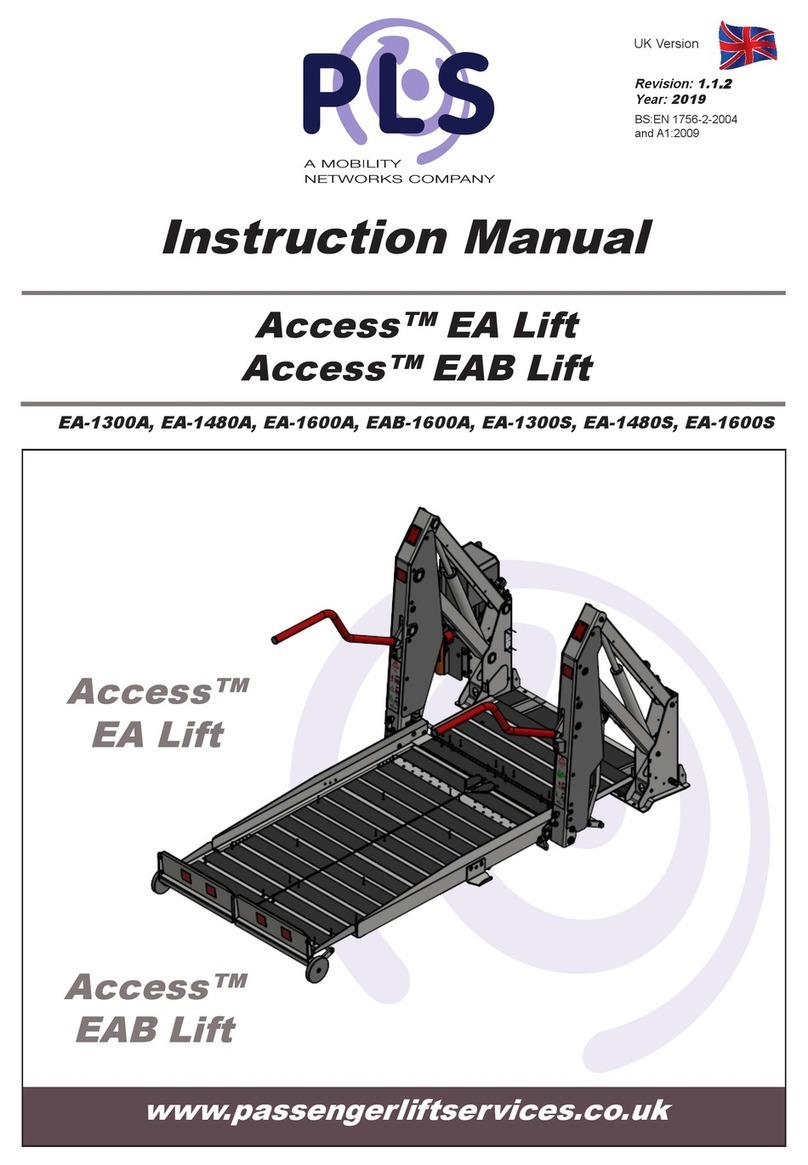
4
1. Introduction
You are no reading the Technical Manual of the PLS Ceiling Hoists AR-200, AR-200D (Detachable), AR-260
and the AR-350 in combination ith the PLS Rail system. The purpose of this technical manual is aimed at
the Technical Service Department of the care institution here this Ceiling Hoist is being used. Each type of
Ceiling Hoist orks in the same manner. The components of the Ceiling Hoists are nearly similar ith the
exception of some structural adjustments and soft are settings. The Service Manual contains:
• Technical Specifications.
• Maintenance Procedure and repairs.
• Component list ith part numbers.
1.1. Used symbols
Warning, potential risk of injury
Read the manual and/or use it as a reference before carrying out maintenance.
. See the user manual for further explanation.
Manufacturer of the product
Product only suitable for indoor use
1.2. Sa ety
If any deformations to the component(s) and/or the rail or corresponding components occurred due
to rong use or transport, they may no longer be used and must be returned to the vendor.
Service and maintenance and replacing a Spreader Bar or other structural components of the Ceiling
Hoist may only be carried out by demonstrably authorised persons.
The Ceiling Hoist may not be used to hoist a mass of more than the number of kg listed on the label.
Al ays disconnect the po er supply hen carrying out assembly ork. A Ceiling Hoist may move in an
uncontrolled manner causing the risk of pinching.
Batteries may only be charged in a properly ventilated dry room. Chargers must be connected in
accordance ith the applicable installation regulations. Chargers must be periodically inspected at
least once a year.
Treat the Ceiling Hoist ith care and ensure a clean and tidy ork environment.
Only use original or parts supplied by PLS BV for repairs or replacement.
PLS BV and your distributor are not responsible for any damage caused by inadvertent, improper,
incorrect or unreasonable use and/or maintenance (described above) or by unauthorised persons.
Contact your distributor if you are not sure.






























